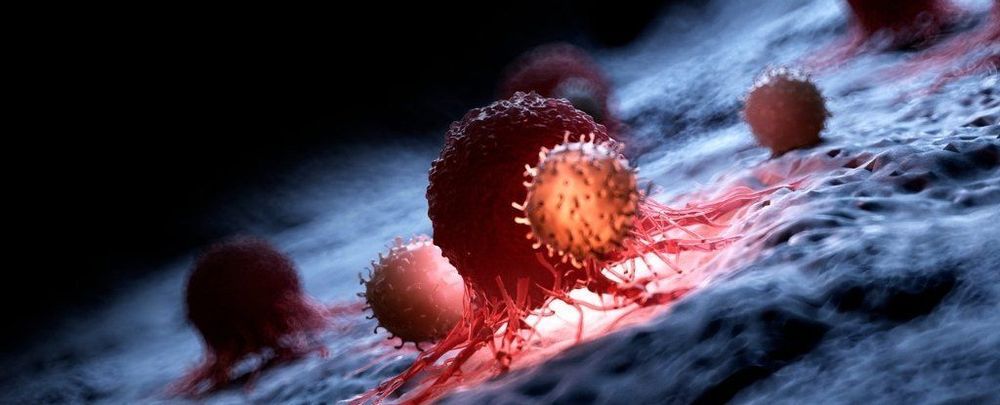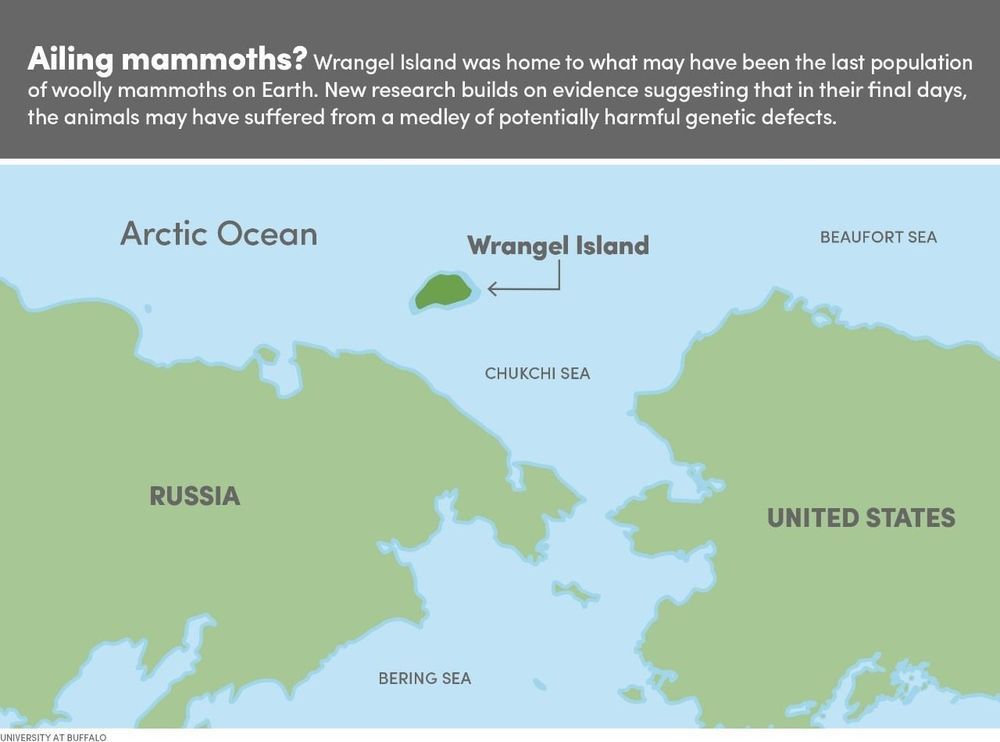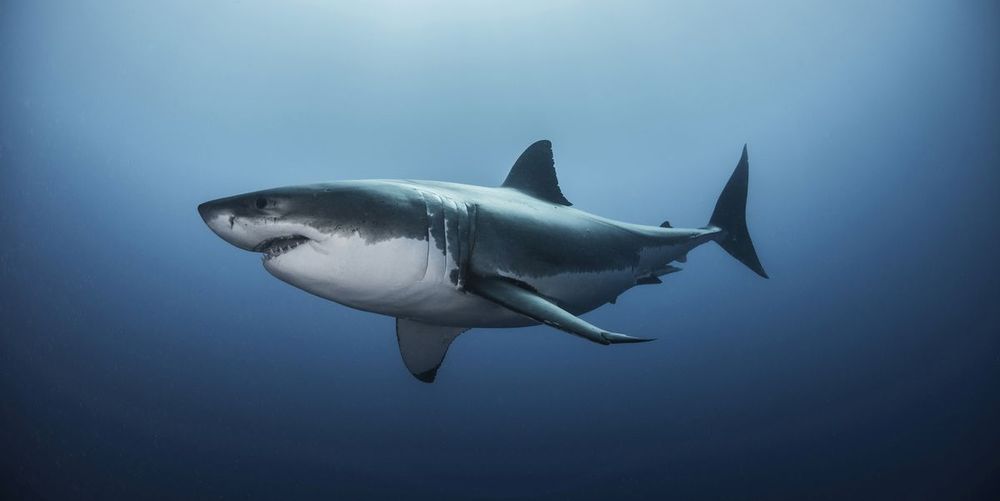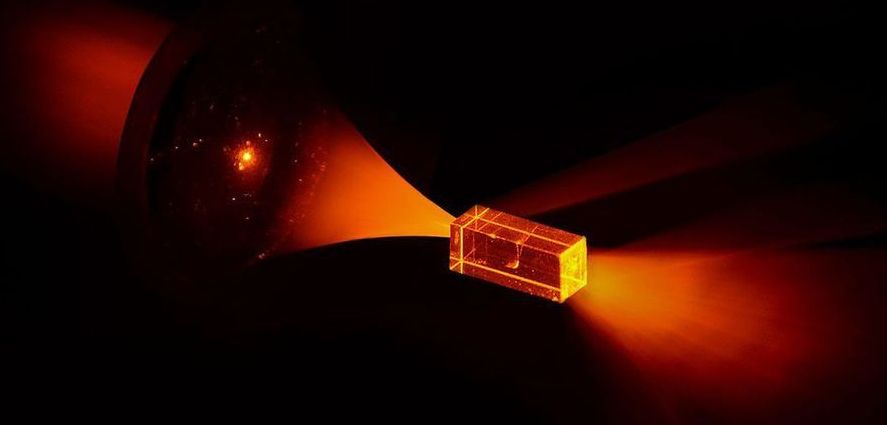Page 7920
Feb 8, 2020
You Have 46 Chromosomes. This Pond Creature Has 15,600
Posted by Quinn Sena in categories: biotech/medical, genetics, life extension
O.o probs alien o.o circa 2013.
Remember when encyclopaedias were books, and not just websites? You’d have a shelf full of information, packaged into entries, and then into separate volumes. Your genome is organised in a similar way. Your DNA is packaged into large volumes called chromosomes. There are 23 pairs of them, each of which contains a long string of genes. And just as encyclopaedia books are bound in sturdy covers to prevent the pages within from fraying, so too are your chromosomes capped by protective structures called telomeres.
That’s basically how it works in any animal or plant or fungus. The number of chromosomes might vary a lot—fruit flies have 8 while dogs have 78—but the basic organisation is the same.
Continue reading “You Have 46 Chromosomes. This Pond Creature Has 15,600” »
Feb 8, 2020
US Trial Shows 3 Cancer Patients Had Their Genomes Altered Safely
Posted by Prem Vijaywargi in categories: biotech/medical, genetics
Researchers-genetically-alter-the-immune-system-of-cancer-patients-without-side-effect.
US scientists have succeeded in genetically editing the immune systems of three cancer patients using CRISPR, without creating any side effects, a first for the tool which is revolutionizing biomedical research.
The highly anticipated results from the first phase of a clinical trial were published in the journal Science on Thursday.
Continue reading “US Trial Shows 3 Cancer Patients Had Their Genomes Altered Safely” »
Feb 8, 2020
Plastic Eating Plants: Will they Save our Environment?
Posted by Quinn Sena in categories: biological, food, particle physics, sustainability
Circa 2016 o.o
Americans dump 251 million tons of trash annually into landfills. Bike seat ripped? Toss it. Hole in the old garden hose? Get rid of it. Spandex not tucking in your tummy? Loose it and replace it. This linear process of extracting a resource, processing it, selling it than discarding it is creating a mound of trash dangerously equivocal to the ball of trash in Futurama episode 8 season 1.
Continue reading “Plastic Eating Plants: Will they Save our Environment?” »
Feb 8, 2020
Scientists resurrected a Wrangel Island mammoth’s mutated genes
Posted by Quinn Sena in category: existential risks
O.o!
Some 4,000 years ago, a tiny population of woolly mammoths died out on Wrangel Island, a remote Arctic refuge off the coast of Siberia.
They may have been the last of their kind anywhere on Earth.
Continue reading “Scientists resurrected a Wrangel Island mammoth’s mutated genes” »
Feb 8, 2020
Sharks Have a Secret Buried in Their DNA That Could Help Humans Fight Cancer
Posted by Quinn Sena in categories: biotech/medical, food, genetics
Sharks are at the top of the marine food chain for a reason. Their massive size along with a dazzling row of extra-sharp teeth make them the fiercest hunters in our oceans. But it turns out that the shark’s aquatic dominance reaches down into its very DNA, and through its mutations, sharks could teach us how to fight our most deadly affliction—cancer.
This isn’t the first evidence that mutations can prove beneficial for disease resistance and long-term survival. High bone density, a hemoglobin that boosts malaria resistance, and a third retinal cone that improves color vision are some human examples. But new gene mapping conducted by scientists at the Save Our Seas Foundation Shark Research Center at Florida’s Nova Southeastern University, the Guy Harvey Research Institute, and the Cornell University College of Veterinary Medicine shows that sharks have developed genomic adaptations that repair damaged DNA, effectively protecting them against cancer and other diseases.
Feb 8, 2020
We May Finally Have a Way to Detect Hawking Radiation Leaking From Black Holes
Posted by Quinn Sena in categories: cosmology, quantum physics

O.o!
The epic collision between two neutron stars in 2017 really is the science gift that keeps on giving. As they merged, gravitational waves rippled out across the Universe; now reverberations from that event could confirm a decades-old hypothesis about black holes.
Continue reading “We May Finally Have a Way to Detect Hawking Radiation Leaking From Black Holes” »
Feb 8, 2020
Scientists create prototype quantum hard drive
Posted by Quinn Sena in categories: computing, encryption, quantum physics
O.o circa 2015.
Researchers from the Australian National University (ANU) and the University of Otago in New Zealand have created a prototype quantum hard drive that may fundamentally alter the realm of secure, long-distance data encryption. Using atoms of the rare-earth element europium embedded in yttrium orthosilicate (YSO) crystals, the scientists have shattered previous records for quantum information retention by creating a storage device capable of holding quantum state information for up to six hours at a time.
Quantum data encryption already offers the promise of intrinsically secure electronic data interchange over relatively short distances (up to around 100 km (62 mi) or so). However, this latest research may help enable a worldwide quantum-encrypted communications network by providing unprecedented storage capabilities and effectively negating the instability problems inherent in currently available technology.
Continue reading “Scientists create prototype quantum hard drive” »
Feb 8, 2020
India Is Becoming Its Own Silicon Valley | VICE on HBO
Posted by Derick Lee in category: engineering
![]()
Traditionally, India’s best and brightest tech talent has emigrated to the United States for lucrative job opportunities. But now they’re putting their entrepreneurial spirit and engineering skills to use at home.
VICE correspondent Krishna Andavolu heads to the city of Bangalore to explore what may indeed be the world’s next Silicon Valley.
Continue reading “India Is Becoming Its Own Silicon Valley | VICE on HBO” »
Feb 8, 2020
Scientists Plugged a Bionic Eye Directly Into This Woman’s Brain
Posted by Genevieve Klien in categories: biological, computing, cyborgs, neuroscience, transhumanism
Bernardeta Gómez has been blind for 16 years. But using a bionic eye developed by Spanish neuroengineer Eduardo Fernandez, she was able to see again — without using her biological eyes at all.
The system, which Fernandez is honing at his University of Miguel Hernandez lab, comprises a few different parts, as detailed in a newly-published story in MIT Technology Review.
First, there’s a pair of glasses fitted with a camera that connects to a computer. The computer translates the camera’s live video feed into electronic signals. Those signals are then sent via a cable to a port that Fernandez surgically embedded in the back of Gómez’s skull. That port connects to an implant in the visual cortex of Gómez’s brain.

















